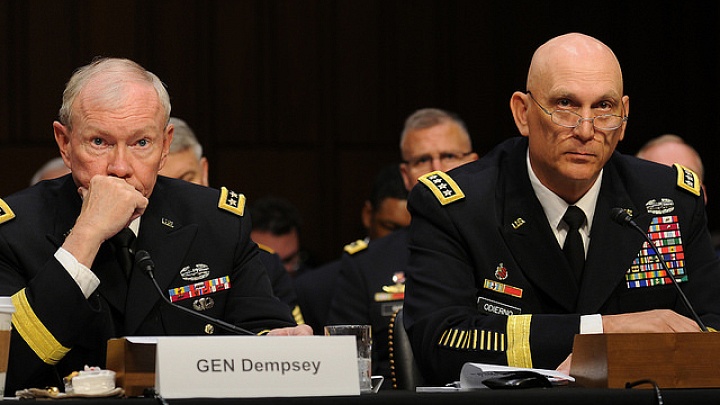
Some countries want big armies, though no countries want to need big armies; but all countries want to have the armies they need, when they need them. Now that the United States has been compelled to join the fight against ISIS in Iraq and Syria after hoping to end more than a decade of wars in Iraq and Afghanistan, our country needs to reconsider the plans for what the U.S. Army should look like, now and in the future. That has to include examining why countries have armies at all, and how the army our country needs may be different than the armies other countries need.
What’s an Army Good For?
The U.S. Army has recently reexamined itself with its October 2014 release of the new Army Operating Concept (AOC) and its annual meeting of the Association of the United States Army in the same month. A large part of the motivation for the Army’s soul-searching has been the significant end-strength reductions the service faces at a time when challenges abound.
The Pentagon’s Fiscal Year 2015 budget proposes to cut the Active Component Army to between 440,000 and 450,000 soldiers, which would make the force smaller than at any time since the beginning of the mobilization to fight World War II. Under sequestration, the force could be further reduced to 420,000. The question is: How small is too small, and for what?
At its 2011 peak during the wars in Iraq and Afghanistan, the Active Component Army numbered 570,000. That’s a lot, compared to 420,000; but at its peak during the war in Vietnam, the Regular Army numbered more than 1.5 million. At its peak at the end of World War II, it numbered almost 8.3 million. The disparity in numbers resulted from lots of things, including major differences in the enemies we faced and in the span of the theaters in which we faced them, as well as improved efficiency and effectiveness throughout the U.S. Joint Force, and with it the reduced need for massed troops. But Army Chief of Staff General Ray Odierno’s foreword to the AOC reasonably insists that, “Conflicts in the future, like those in the past, will ultimately be resolved on land. Hence the [AOC] recognizes that Army forces will be essential components of joint operations to create sustainable political outcomes while defeating enemies and adversaries who will challenge U.S. advantages in all domains.”
Our Army’s massed forces will not be the key to success at most or any of the world’s numerous impending flashpoints; but the absence of a mass-able force may be the key to our failurethe math has to be about winning.
The AOC’s title is, “Winning in a Complex World.” That title starts with the right word. Countries have armies first a
